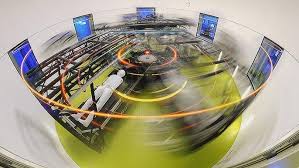
As humanity prepares for long-duration space missions, one major challenge remains: the effects of weightlessness on the human body. From muscle atrophy to bone density loss, living in zero gravity can be harmful. Scientists are now exploring ways to create artificial gravity, making space travel safer and more sustainable.
1. Why Artificial Gravity Matters
Extended exposure to microgravity affects nearly every system in the human body:
- Muscles weaken due to lack of use.
- Bones lose density, increasing the risk of fractures.
- Circulatory and vestibular systems are disrupted, causing dizziness and heart issues.
- Immune system function can decline, making astronauts more susceptible to illness.
Artificial gravity could mitigate these health risks and make long-term space missions, such as trips to Mars, more feasible.
2. How Artificial Gravity Can Be Created
Scientists and engineers have proposed several methods:
2.1 Rotating Spacecraft
- A spinning habitat generates centrifugal force, simulating gravity along the outer edge.
- The faster the rotation, the stronger the artificial gravity.
- Challenges include motion sickness and engineering large, stable rotating structures.
2.2 Linear Acceleration
- A spacecraft accelerating at 9.8 m/s² (Earth gravity) creates a gravity-like effect.
- Not practical for long-duration missions due to fuel requirements.
2.3 Localized Gravity Devices
- Using magnetic or mechanical systems to simulate gravity in small areas.
- Could help astronauts exercise or perform tasks in partial gravity conditions.
3. Benefits of Artificial Gravity
- Preserves health: Reduces bone and muscle loss, improves cardiovascular function.
- Improves performance: Astronauts remain stronger and more alert during missions.
- Psychological well-being: A sense of “normal” gravity can reduce disorientation and stress.
- Enables longer missions: Critical for Mars exploration or deep-space colonization.
4. Challenges in Implementation
- Engineering complexity: Building large, rotating habitats in space is difficult.
- Cost: High costs associated with construction, materials, and launch logistics.
- Human tolerance: Rapid spinning may cause nausea or motion sickness.
- Energy requirements: Sustaining acceleration or rotation over long periods is challenging.
5. The Future of Artificial Gravity
Research continues with experiments on Earth, in parabolic flights, and aboard the International Space Station (ISS). Future possibilities include:
- Rotating sections on lunar or Martian habitats.
- Small-scale centrifuges for exercise or work areas on spacecraft.
- Hybrid systems combining partial gravity with traditional exercise routines.
With advances in engineering and human physiology studies, artificial gravity could become a key enabler for interplanetary travel.
Final Thoughts
Artificial gravity is not just science fiction—it’s a critical solution for long-term space exploration. By recreating the effects of gravity, scientists aim to protect astronaut health, improve performance, and make deep-space missions safer and more sustainable.